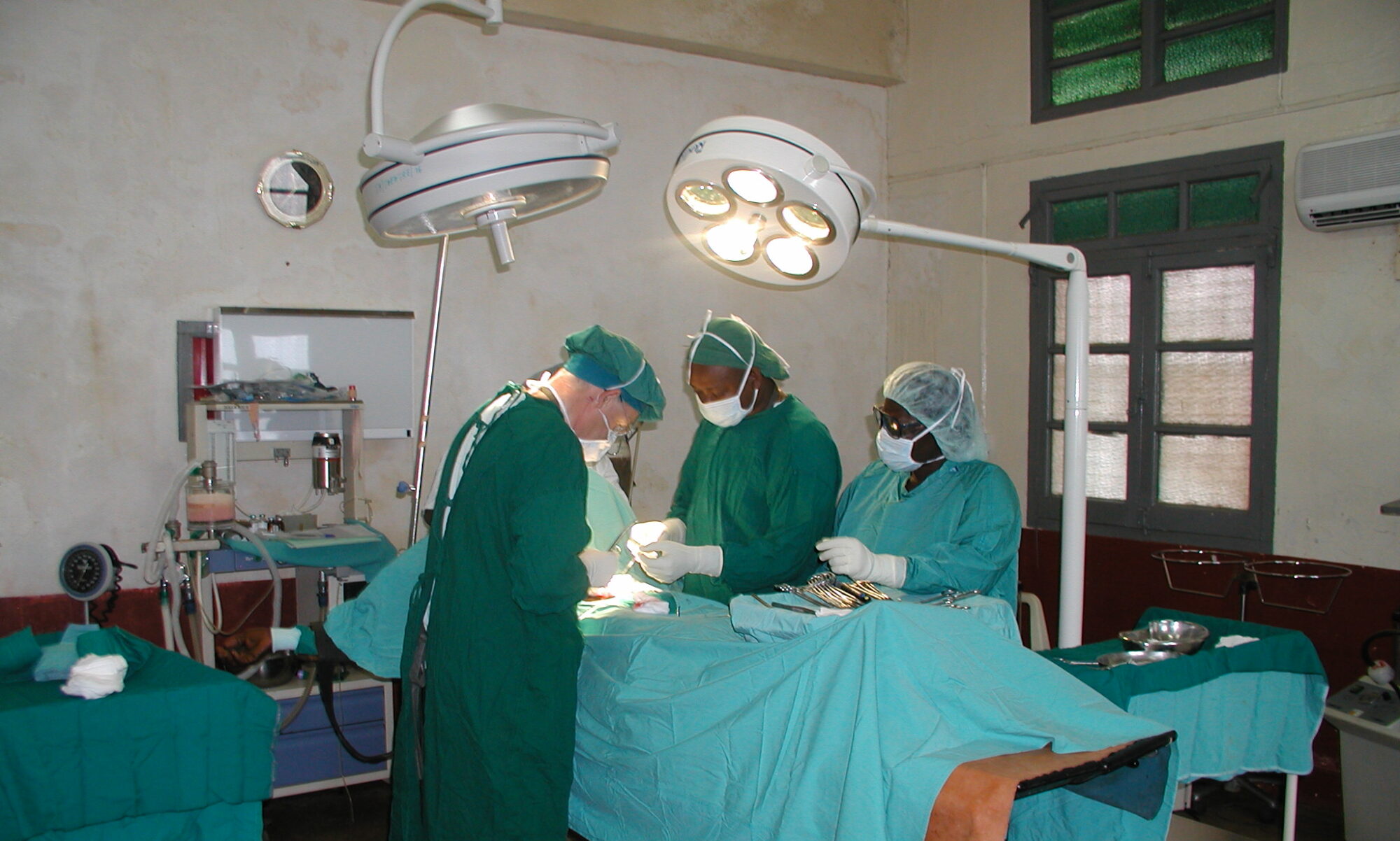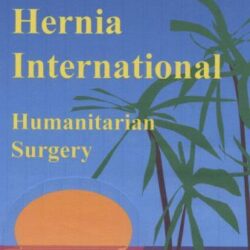MISSION TO GANTA CITY, LIBERIA. JULY 2017
THE TEAM
John Hobbiss. Surgeon
Thomas Simon. Surgeon
Ramin Kousary. Surgeon
Takesure Mamvura. Operating Department Practitioner
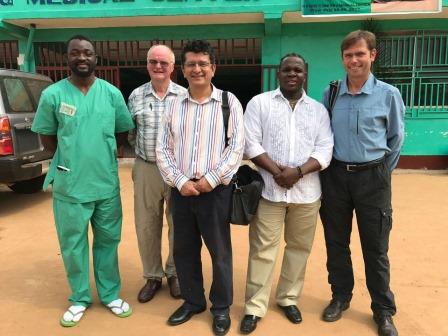
THE HOST
Ganta City is a market town three hours’ drive (on a tarmacadam road recently built by a Chinese company) inland from the capital Monrovia, fairly close to the border with Guinea. The long-standing low level of health care provision in Liberia was made worse by the civil war 12 years ago, when many hospitals were taken over for military use, and then by the Ebola crisis of 2014, when many hospitals were closed. Both these events served to increase the sense of isolation experienced by Liberian doctors and rebuilding services following them has been slow.
Our host hospital, The E and J Medical Centre is an example of how some expansion of medical services is taking place. It was opened a year ago to provide mainly surgical and gynaecological services. Medical and surgical cover is provided by two doctors with support from a limited number of trainees. Anaesthetic cover is provided by two experienced anaesthetic nurse practioners, who work in both the E and J Hospital and a neighbouring hospital and a recently appointed anaesthetic practitioner working full time at The E and J.
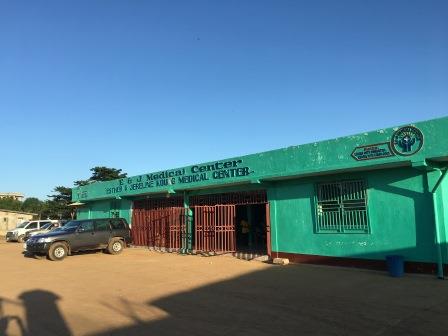
OUR WORK
We had seven full days of work. We arrived in Ganta City late at night and spent our first day, attending a very impressive welcoming ceremony and then seeing patients in the Out Patient Department (OPD). There had been announcements of our mission on the local radio, informing that we were coming to provide hernia repairs free of charge. About two hundred and twenty people responded to the announcements, many more than could have been operated on during our limited stay. Each responder was given a number and then called in turn to be seen in the OPD. We spent all of the next two days in the Operating theatres and then had a further OPD session on our fourth morning. One more batch of patients were seen in the OPD by Dr George on the fifth morning.
We operated on 126 patients and repaired 135 herniae. 86 patients were adult men (18 years and over), 11 were adult women and 38 were children under 18 years. There were 73 adult inguinal herniae (25 were described as inguino-scrotal); 11 umbilical or other midline defects and 2 femoral herniae. The 38 children all of whom had inguinal hernia repairs (10 were bilateral) with an additional umbilical hernia repair performed in 4.
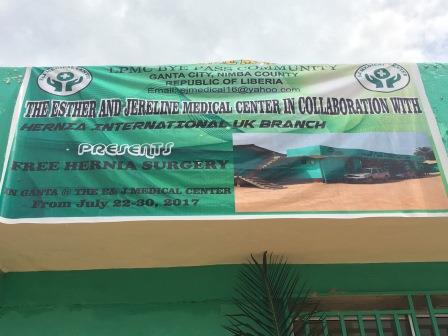
COMPLICATIONS
One man had a large scrotal haematoma the following morning which was drained through a scrotal incision. One man, who had a large femoral hernia repaired from below with some difficulty, due to dense scarring from previous surgery in the inguinal canal, had an obvious recurrence of the hernia by the next morning. A repeat repair was carried from above the inguinal ligament, with the pre-peritoneal space being entered through the posterior wall of the inguinal canal and the defect, along with the posterior wall, were then repaired with mesh. One man had a severe headache and neck stiffness on the morning after surgery. We were concerned about meningitis and recommended intravenous antibiotics. Two days later he had been sent home and it seems likely that this was a spinal headache. One infant developed laryngospasm shortly after returning to the ward. Respiratory support with a suitably-sized Ambu bag was required for a few minutes. This left the child with a very distended abdomen for the rest of the day, but his breathing gradually settled and he was back to normal the next day. One infant vomited during surgery and aspirated breastmilk. We learnt that he had breastfed an hour before his ketamine anaesthetic. He had a post-operative tachypnoea and some rib recession later that day but seemed back to normal by the following morning.
It is likely that more complications will develop during the days following surgery. Inevitably some of the patients with big scrotal herniae will develop scrotal oedema and haematomata, in spite of the seemingly very effective scrotal bandages which were applied by the anaesthetic practitioners. The later complication that worried us most was that of wound infection and chronic mesh infection. We had left the country before these problems would manifest themselves and, without a system of formal follow up, we will never know the actual incidence of septic complications. Dr George has said that he will keep us informed of any follow up information of which he becomes aware.
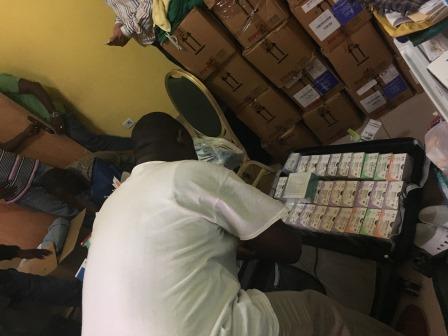
ASEPSIS AND ANTIBIOTICS
On leaving Liberia and reflecting on our six days of surgery, the aspect of our practice which concerned us most was the potential for surgical site sepsis. It was difficult to be confident that we were operating in an aseptic field during the course of any procedure. The skin was diligently prepared with antiseptic solution but there were many instances when asepsis could not be guaranteed. Our surgical gowns were thin, single use paper gowns as we might expect to wear in an isolation cubicle. They were clean, but not sterile. The drape isolating the surgical site was very often a single-use surgical gown in which a hole was cut to give access to the patient. This was sterile but not fixed in place. The scrub nurses clearly understood the theory of asepsis but sometimes the theory did not convert into practice. The sterilization of drapes and instruments was carried out in a pressure cooker type of container heated on a charcoal fire. When a live ant appeared from a drape as we unfolded it at the start of one case, one couldn’t help wondering how reliable this system was at achieving the required temperatures for sterilization.
We had not brought any antibiotics with us for routine use. Dr George had provided each adult patient with a three-day course of an antibiotic to take home. On reflection, we would have liked to be have been able to give all patients for mesh repair a single intravenous dose of broad spectrum antibiotic at the time of their spinal anaesthetic as a prophylactic against mesh infection. To do this a supply of the antibiotic would need to be brought by the mission team.
On considering the problem of asepsis, we were very fortunate to have an Operating Department Practitioner (ODP), Takesure Mamvura, as part of our team. Whereas the three surgeons were the workers of the mission, Takesure was the educator. He was able set an example on how to maintain asepsis during the procedures using simple suggestions such as covering the feet and lower legs with a drape and using small sterile towels, which seemed to be available in reasonable quantities, around the surgical site beneath the drape. He was also able to lead by example in other aspects of ODP technique, such as the benefits of maintaining a tidy and well-ordered instrument tray, instrument handling to prevent needle stick and scalpel blade injuries and the value of needle, swab and instrument counts.
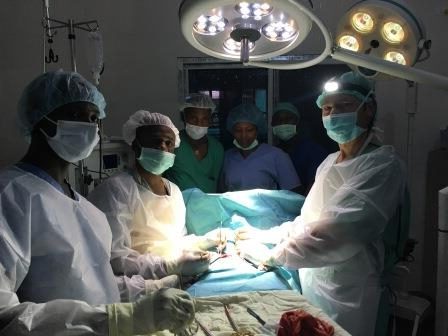
PATIENT IDENTIFICATION AND MARKING
Another aspect of surgical practice that could be improved, following the experience of this visit, was that of patient identification and surgical site marking. All patients had a “chart”, which consisted of the two sheets of paper, one with the outpatient note and the other with the nursing note from the ward. Patients came to theatre with a chart usually, but not always, their own. Bringing the wrong chart seemed to occur more frequently with the young children. On one occasion the outpatient note stated “History of left scrotal swelling. No evidence of a hernia today in spite of crying ++. Not for surgery” and there on the table was an infant with a large right scrotal swelling. It would very helpful if every patient who was put on the list for surgery in the clinic was issued with a wrist band with identification details. Probably the name and proposed surgery would suffice. At the same time the surgical site could be marked. The wrist bands and surgical marking pens would need to be brought by the mission team.
ANAESTHETICS
One of the most remarkable aspects of our surgical experience in the E and J Hospital was the quality of the anaesthetic provision. Successful spinal anaesthetics were administered quickly and with great reliability so that additional anaesthesia, in the form of Ketamine or local infiltration, was only rarely required. The three anaesthetic practioners concerned, Abenego Yebakeh, Emmanuel Johson and Brenda Koly deserve great credit for this. In addition to giving the anaesthetic, they were also responsible for organising the operating lists and ensuring that the next patient was sitting waiting outside the theatre as the previous patient was wheeled out. The large number of cases that we operated on bears testimony to the way they worked. It enabled us to achieve a patient turnover rate which would be unthinkable in modern European practice.
One aspect of the anaesthetic practice with which we were not happy was the use of spinal anaesthetic in children. It seemed unrealistic to expect a young child to cooperate with the insertion of a spinal needle. It is true that some did manage, but others resisted and required Ketamine. We would have preferred to see Ketamine used as the first line anaesthetic for these children or at least a dose of Ketamine used prior to the insertion of the spinal needle.
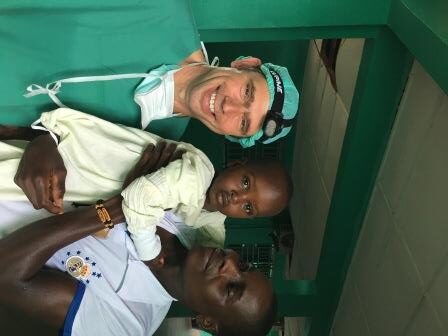
EQUIPMENT
The mesh provided by Hernia International was perfectly satisfactory. We didn’t initially realise that some packets contained double sheets for bilateral hernia so there was some wastage. We also had with us some meshes donated by Braun Ltd which were very useful for large defects. We used the majority of the large number of sutures which we had taken with us. A good supply of surgical ties was very important, as most procedures were done without diathermy. We had brought some boxes of surgical gloves and extra were supplied by the hospital. Double gloving was regarded as the norm. Thomas Simon had been given several sets of surgical instruments by Braun Ltd. These proved very helpful and future missions would benefit from providing themselves with, if nothing else, suitable dissecting scissors. The hospital provided scalpel blades, but smaller ones for paediatric use would have been useful.
The operating lights provided good illumination but were sometimes difficult to manoeuvre. Also the electricity supply was erratic and a number of blackouts occurred. These were, thankfully, short-lived and hopefully will be less frequent when the planned solar / battery system is installed. Even so, we recommend that surgeons on future missions provide themselves with the reassurance of independent illumination from a good quality headlight.
One of our party sustained a significant needle stick injury during the course of a procedure. The spot test for HIV on the patient was negative. The surgeon concerned had brought a five day course of PEP (post exposure prophylaxis) with him and was reassured by being able to take it.
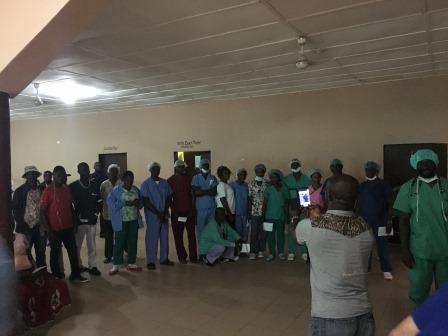
PAEDIATRIC SURGERY
A significant proportion of the surgery that we undertook was on children and we would strongly recommend that future missions include at least one surgeon who is familiar with groin surgery in children. We felt that the paediatric surgery that we did was potentially the most beneficial of all our work. If a simple herniotomy in childhood can prevent a large inguino-scrotal hernia, in which the vas is densely plastered to the sac (a very common scenario), in early adult life, then so much the better.
The infants who were bought for surgery all had bilateral, irreducible inguino-scrotal herniae. It seems likely that it was the recognition of the high risk of strangulation, with its very grave prognosis, which prompted the mothers to bring their babies for surgery. These were some of the most challenging cases that we were confronted with during our mission. The Ketamine provided no muscle relaxation and seemed (understandably) to be given fairly sparingly to the babies. A sudden flexion of the hip during the course of the dissection was not uncommon. Usually the inguinal canal had to be full opened before reduction could be achieved.
After we had spent our first day seeing patients in the clinic, we decided that we should put the children before the adults on the next days’ operating list and that, in line with our normal practice, we put the youngest children first. We realised, too late, that this meant that we had given ourselves the most challenging cases to do first in the unfamiliar operating theatre with unfamiliar staff. Subsequent missions may wish to pick some reasonably straight forward cases for their first morning.
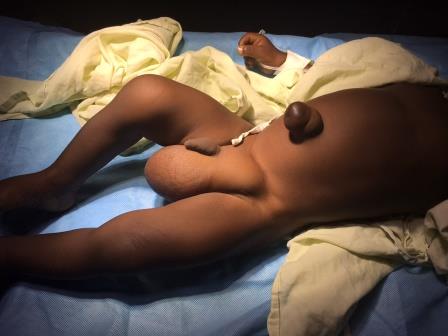
The purpose of our mission was to provide the “free of charge” hernia repairs, which had been advertised on the radio, to as many patients as we could. This meant that we needed to do most of the operating ourselves, rather than spend time training the junior surgeons. Clearly, however, if we could train some of the local surgeons to do high quality hernia repairs, which in our case meant either a mesh repair or, in selected cases, a Shouldice repair, then we would leave behind a more sustainable surgical legacy. We had a particular incentive to do some training, as we knew that those patients who had presented following the radio announcement and whom we didn’t have time to operate on, were assured that they would have their hernia repaired as part of the “free of charge” deal by the local surgeons after we had gone. Two of the local surgeons, Dr Charles Manakpalah and Dr Charlie Kinpesa were very capable surgeons. They were taught to do both mesh and Shouldice repairs. We received a message subsequently from Dr Charles to say that they had successfully operated on the remaining patients.
Also assisting us were other surgical trainees of very variable experience. Some of them had not yet acquired basic surgical skills. They were advised to practise their knot-tying and suturing as much as possible before the next mission to the E and J Hospital in order to obtain maximum benefit as from the experience.
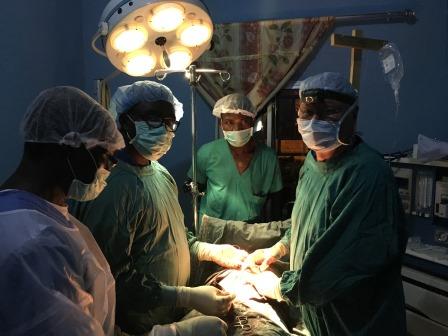
ACCOMMODATION AND SUBSISTENCE
We were provided with very comfortable accommodation at Jackie’s Guest House, where we had individual rooms with en-suite facilities, television and intermittent Wi-Fi. One of the pleasures of the week was sitting in the courtyard of the guesthouse in the evenings, drinking the local beer in the company of Peter George and his friends. The breakfasts and dinners provided by Jackie’s were much enjoyed. Food was not included in the $50 per night fee that had been negotiated for us by Dr George and future missions should be aware that subsistence expenses will contribute significantly to the cost of their mission.
There is no hospital restaurant in the E and J Hospital and special arrangements had to be made for lunch. We would advise future missions to discuss the provision of lunch with Dr George. During our week, Dr George usually arranged for food to be brought in from outside the hospital and we ate it in his office. (It is important not to forget to pay for this as otherwise Dr George would have to pay for it himself.). On two occasions we were taken into town in a hospital car and had lunch at Maggi’s Restaurant. This is something that we would recommend, both for the enjoyment of the lunch and for the welcome break it gives in the middle of a busy day. We also recommend that surgeons provide themselves with water to take to the operating theatres (or Coca-Cola if caffeine is required in addition to rehydration). We were aware that, in spite of the air conditioning in the theatres, we were often sweating freely during the long and sometimes demanding sessions.
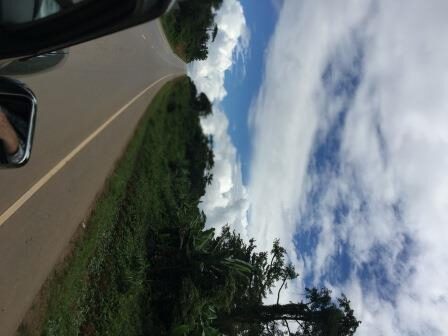
CONCLUSION
We would like to pay tribute to the hard work undertaken by Dr George and his support team at The E and J Hospital in preparing for our visit. Missions such as ours require close co-operation between the host and the mission. The support we received at the E and J Hospital demonstrated that it was a very suitable host for such missions.
In the long term it is to be hoped that expansion of medical provision by the Liberian State will enable a service to develop which will begin to tackle the large number of people who would benefit from elective surgical care. For the time being, these people will have to rely upon charitable provision by external agencies. We hope that our mission has paved the way for successful missions in the future.
All four members of our team left Liberia with happy memories of the country, the town, the hospital, the people and the marvellous welcoming and farewell ceremonies that we found so moving. Our heartfelt thanks to all concerned for the hospitality that we received.
John Hobbiss
